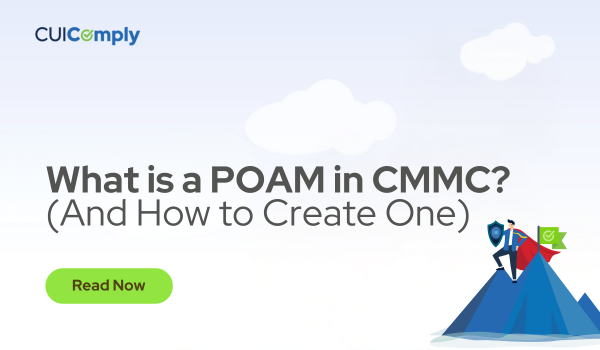What Is a POAM?
A Plan of Action and Milestones (POAM, or POA&M) is a formal corrective action plan created when a security requirement in NIST SP 800-171, NIST SP 800-53, or CMMC is not fully satisfied and cannot be marked as “Met.”
This should not be confused with an Organizational Plan of Action (OPA). OPAs track vulnerabilities or deficiencies that need remediation, but they do not change the status of a control from “Met” to “Not Met.” POAMs, on the other hand, specifically address non-met requirements.
The Purpose of a POAM
The goal of a POAM is to provide a structured and auditable approach to remediating compliance gaps. If a control is assessed as “Not Met,” an organization must:
- Document why it is not satisfied
- Identify corrective actions to resolve the deficiency
- Track progress toward remediation
Done well, this enables:
- Risk-informed decision-making
- Progress tracking for implementation
- Accountability across teams
- Transparency during audits and assessments
What Should a POAM Contain?
A well-structured POAM should provide a clear roadmap for addressing security gaps and serve as both a project management and accountability tool. At a minimum, it should include:
- Title – Clear enough to quickly reference the intent of the POAM
- Status – Open, Pending, In Progress, Delayed/Overdue, Missed, or Closed
- Assigned Controls/Objectives – The requirement(s) this POAM addresses
- Responsible Party/Owner – Who owns the control and tracks progress/completes the POAM
- Due Date – Realistic timeline for resolution (must be closed within 180 days of an official assessment unless otherwise noted)
- Weakness/Gap Description – A detailed explanation of the issue, not just the control ID
- Remediation Plan – Step-by-step actions to close the gap
Additional helpful, but not required, fields include:
- POAM ID for tracking
- Risk Assessment to gauge exposure
- Planned Milestones as checkpoints
- Resource Estimates for cost or staffing impact
- Impact notes describing how the change affects users or systems
When Should a POAM Be Created?
POAMs should be created any time a “Not Met” item is discovered outside of formal assessments, such as during self-assessments. This early documentation ensures proactive remediation and better readiness for any upcoming assessments.
In a formal CMMC assessment, once Conditional Status is awarded, all POAM items must be created and remediated within 180 days. Once closed, a POAM must be verified by a qualified assessor (C3PAO or DIBCAC, depending on level) before final certification is awarded.
How to Create a POAM
Building a POAM is straightforward if you follow the framework:
- Identify the “Not Met” control or objective.
- Verify related controls/objectives and group them if needed.
- Create a POAM ID and title that captures the purpose.
- Assign a status (usually Open or Pending at creation).
- Add a Responsible Party and Due Date (within 180 days).
- Write a detailed gap description.
- Develop the remediation plan with detailed steps to close the gap.
The more detail you provide, the easier it will be for assigned personnel to execute and for assessors to verify progress.
Why Managing POAMs Is Hard
For many organizations, POAMs live in scattered spreadsheets or Word docs. Ownership isn’t clear, milestones get missed, and progress tracking is minimal. By the time an assessor looks at your documentation, it can appear as if nothing has moved forward.
This kind of manual tracking creates unnecessary risk and can derail certification.
How CUIComply Simplifies POAM Management
CUIComply eliminates the chaos by centralizing all POAMs in one platform and tying them directly to CMMC requirements. Within CUIComply, you can:
- Link POAMs to specific NIST 800-171 controls
- Assign tasks and track ownership across your team
- Upload evidence to show remediation progress
- Provide real-time visibility to leadership and assessors
Instead of wrestling with disconnected spreadsheets, you can demonstrate that your POAMs are structured and actively moving toward closure.
The Bottom Line
POAMs are powerful compliance management tools that provide accountability and transparency, helping your organization close gaps and build toward certification.
With CUIComply, POAMs become part of a seamless compliance workflow, ensuring that remediation is tracked, validated, and completed on time.

